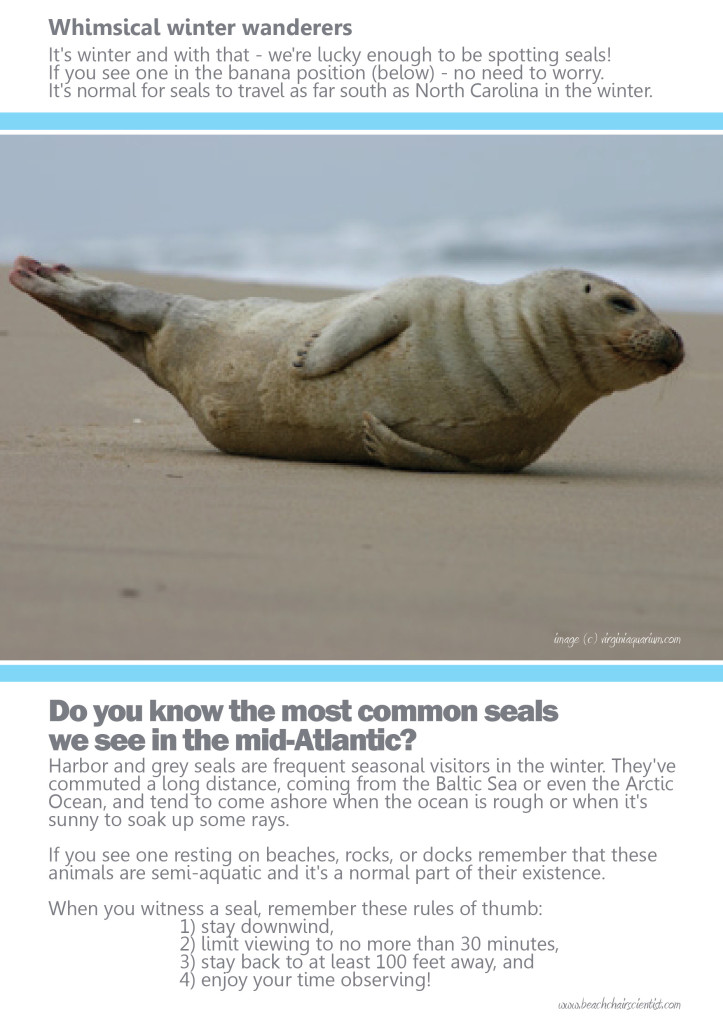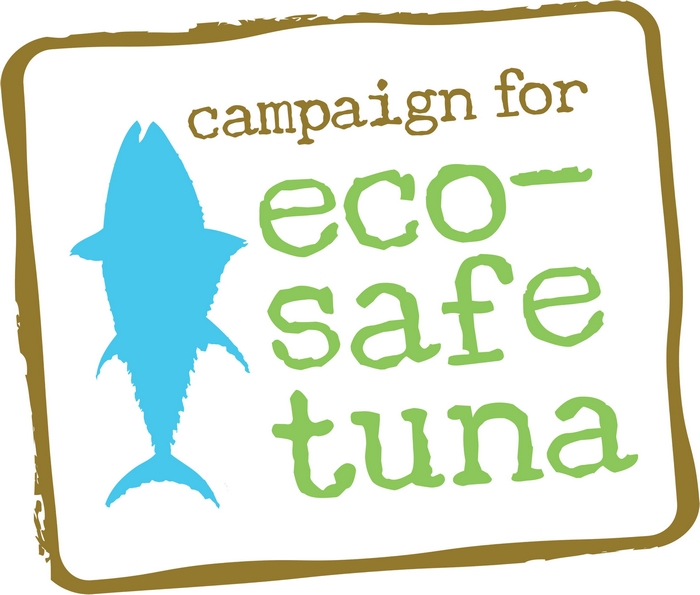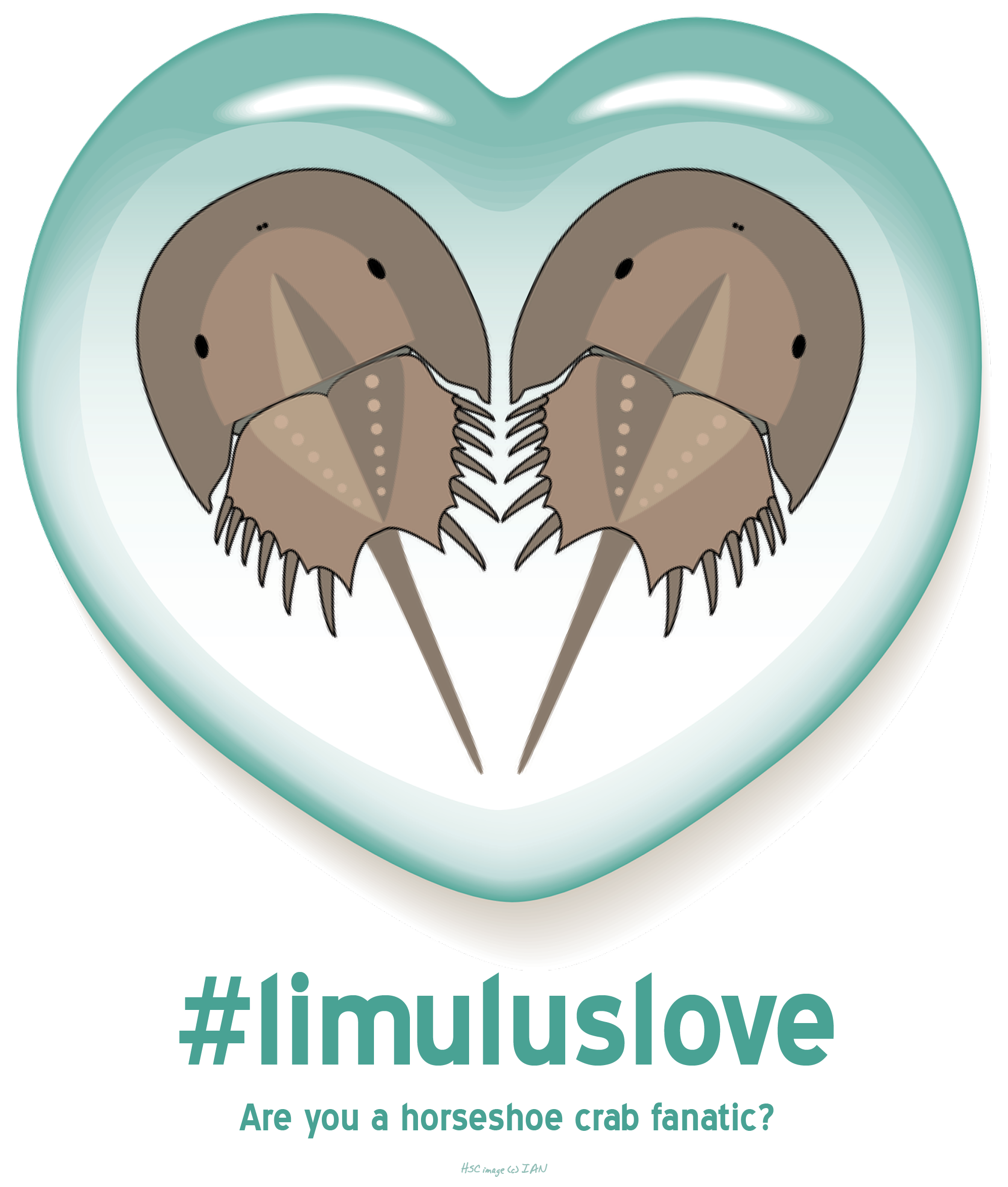It’s critical that you do not disturb seals when viewing. All marine mammals (e.g., seals, whales, walruses, porpoises, dolphins) are federally protected under the Marine Mammal Protection Act. If you do see an animal in distress contact your local member of the Northeast Region Marine Mammal and Sea Turtle Stranding & Entanglement Network.
Marine & Freshwater Environmental Education
Follow BCS on Twitter
My TweetsWant updates on BCS posts?
Scroll through the BCS archives …
Learn more on …
Random posts from BCS …
Marine Mammal Monday: The Marine Mammals of Virginia
From Robert A. Blaylock of Virginia Institute of Marine Science (VIMS) (thirty years ago!) is a pretty fun guide to look through if you’re into historical documents. Yes, that would be me. It is not very up to date on endangered species listing, but was does a fantastic job setting out on its intention “To […]
My awesome, overprotective mom and horseshoe crabs
No joke. I like horseshoe crabs, but not more than my family. Especially my mom. Let me tell you a story about how incredible she was one particular evening in early June. It was probably about 2002 and I was a seasonal employee for the NJ Division of Fish and Wildlife. The job was awesome […]
Do isopods live in the ocean?
Yes. There are 45,000 different types of marine isopods. Isopods are crustaceans and have a body divided into three parts: head, thorax and abdomen. Actually, isopods are the most diverse of all the types of crustaceans and are unique because they are the most widely distrubed crustacean out there! When in doubt, call it an […]
A Few Lines from Rehoboth Beach by Fleda Brown
Dear friend, you were right: the smell of fish and foam and algae makes one green smell together. It clears my head. It empties me enough to fit down in my own skin for a while, singleminded as a surfer. The first day here, there was nobody, from one distance to the other. Rain rose […]
A plea of the manatee
In early 2009 the Florida Fish and Wildlife Conservation Commission (FWCC) reported that there was a significant increase in the population of the West Indian Manatee (Trichechus manatus), a marine mammal. Almost a year later it was reported that there was a record number of deaths of manatees. Even though the FWCC pointed out that […]
Why does a sea urchin attach seashells to itself?
You may not notice it, but sea urchins have very thin tube-like suction cup feet, just like their close relative the sea stars. These feet are useful to grasp onto pieces of seashells, pebbles, or seaweed to disguise the sea urchin from other nearby predators. Click on this post to see what eats a sea […]
Christmas critter countdown: Star coral
Coral may look like a rock but they’re certainly not! Take some time to learn about the vulnerable species here. It’s climate change we have to worry about but the ocean habitat is up against ocean acidification and the first clue is from coral.
10 reasons you’ll want to start to collect bottle caps
I try to reduce-reuse-recycle-refuse-reuse as much as possible but sometimes there is no way around it. Your home collects trash and waste. We seem to accumulate plastic caps. Bottle caps are one of the top five types of litter found on beaches worldwide. Imagine how many are in the sea we can’t see!? First, check […]
Ocean Leaders Recognized
On June 8 in Washington D.C. Honorable Lois Capp (CA), Honorable Ileana Ros-Lehtinen (FL) and Julie Packard were recognized for their roles as leaders in the ocean community. According to the National Marine Sanctuary Foundation (NMSF), the organization that distributes the awards, these women were recognized for the following reasons: “Rep. Capps received the Award […]
More on marine debris …
Healthy autumn eating tips Home » Health and Wellness Articles » Nutrition » Healthy autumn eating tips A change in season often means a change in diet and routine. You may feel more inclined to seek the warmth and comfort indoors once you notice it getting a little cooler outside. Avoid falling into the trap of sabotaging the healthy habits you […]
Flickr photos …
Top posts & pages from BCS …
- Hurricane vs. Cyclone vs. Typhoon
- A House for Hermit Crab
- How to handle a horseshoe crab
- Snot's your house
- Wednesday Wisdom: Various quotes (Alaska scenes)
- A naturalist's must-see destination: Fossil Hunting at Bayfront State Park in Chesapeake Beach, MD
- Belly biology creates lasting memories
- Five awful puns about courtship in the sea
- Horseshoe crabs confirmed as members of arachnid family
- Beyond the bag: Other plastics being banned








What people are saying …